Hair Transplant in Santo Domingo
Search and Compare the Best Clinics and Doctors at the Lowest Prices for Hair Transplant in Santo Domingo
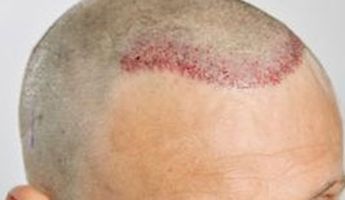
Find the best clinics for Hair Transplant in Santo Domingo
With Medijump you can browse 3 facilities offering Hair Transplant procedures in Santo Domingo. The cheapest price available is $2,632 in Santo Domingo. And for the cheapest price globally, prices start from $126 in Egypt.
Hair Transplant in Dominican Republic
Price: $ 2,632
Hair Transplant in Santo Domingo
Price: $ 2,632
Egypt offers the best prices Worldwide
Price: $ 126
Anatomica Hair Transplantation Clinic, can be found in Calle Guayubin Olivo, Santo Domingo, Dominican Republic and offers its patients Hair Transplant procedures as well as 17 other procedures, across 3 different procedure categories. The price of a Hair Transplant procedure varies from $3,000 to $5,000, and the average price is around $2,952. Many medical professionals work at the Clinic, with 7 in total, and Anatomica Hair Transplantation Clinic is not accredited by any recognised accreditations institutions.
From 40 verified reviews
Bryan Baez, 20 September 2020
I just did my hair transplant with Dr Alba Reyes. Very happy with how everything went. Dr Alba Reyes was awesome explained everything, just speaking with her for a bit I could tell I made the right choice. From beginning to end everything was great. Also Vanessa was awesome very professional answered any questions I had at whatever time. She explained everything to the T and was Great. I know it’s only been a few days & have to wait a while to see final results. But very happy with the way my hairline looks just a few days after. Can’t wait to see the final results. This is definitely the place to go if you need a hair transplant, 1000% recommend them.
From 40 verified reviews
gilberto reyes, 21 September 2020
Super the treatment they gave me I recommend it and very professional I am very happy with the work I will do the dr Alba Reyes I hope for months to have my hair how I wanted 😍😍😍🙏🙏🙏
- Home
- Dominican Republic
- Santo Domingo
Compare Before & After Photos of _procedure_photos.phpHair Transplant
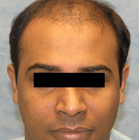
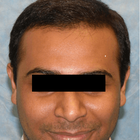
Front view
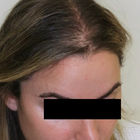
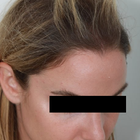
Half-side view
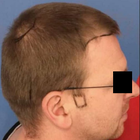
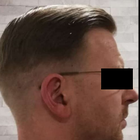
Full-side view
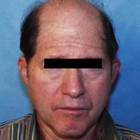
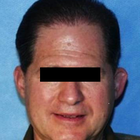
Front view
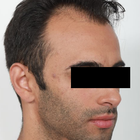
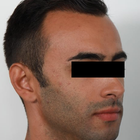
Half-side view
WHY US?
At Medijump, we're making medical easy. You can search, compare, discuss, and book your medical all in one place. We open the door to the best medical providers worldwide, saving you time and energy along the way, and it's all for FREE, no hidden fees, and no price markups guaranteed. So what are you waiting for?

Free

Best Price

Widest Selection

Risk-Free
What you need to know about Hair Transplant in Santo Domingo

Hair Transplantation, also known as hair restoration surgery, is the surgical process of moving hair follicles from one part of the body that is rich in hair (known as a donor site) and embedding them at the the bald area of the head (recipient site). The medical course of action that aims at addressing hair loss issues and improving aesthetics. While there are many causes of hair loss, the most common reason, especially for men, is genetics. Hereditary hair loss as men age is the number one leading factor of baldness.
It is a minimally invasive procedure, performed under local anesthetic and is most commonly used to treat male baldness, but the technique can also be used to restore eyelashes, eyebrows, beard hair and to fill in scars. The procedure usually lasts between 4 to 8 hours, depending on the number of grafts needed. This procedure is a long-term solution to hair loss, with most patients experiencing significant improvement in hair growth after six months to a year.
Why do people experience hair loss?
We lose an average of 100 hairs a day, however, these hairs are immediately replaced by new hairs growing at the same time. Hair loss can occur suddenly or gradually and it may affect your scalp or your entire body, depending on what’s causing it. Other causes of hair loss may include:
- Stress - a lot of people may experience hair thinning for several months due to a physical or emotional shock. However, this type of hair loss is only temporary.
- Certain Hairstyles and treatments - hairstyles that pull your hair like tight pigtails, ponytails or braids can actually cause traction alopecia. Permanent hair treatments and hot oil treatment may also lead to hair loss; these hair treatments cause inflammation to the hair follicles. If there is scarring, hair loss may be permanent.
- Radiation Therapy - for example, during cancer treatment.
- Certain medical conditions and hormonal changes - in women, hormonal changes due to pregnancy, childbirth menopause or thyroid problems may cause temporary or permanent hair loss. As for medical conditions, hair loss may be due to alopecia, scalp infections like ringworm or a hair-pulling disorder known as trichotillomania.
Sudden hair loss may also be a sign of a specific medical condition that will require treatment. You will need to consult your doctor if you experience more than your usual hair loss whenever you are combing or washing your hair and also if you encounter a sudden patchy loss of hair.
A hair transplant is a common treatment performed on people who are experiencing baldness due to aging and heredity factors. However, if you are completely bald with absolutely no hair left, then this type of treatment may not be applicable for you, as you won't have sufficient donor hair to supply.
What is the cost of Hair Transplant in Santo Domingo?
The cost of Hair Transplant in Santo Domingo is typically influenced by various factors. These may include the experience and reputation of the surgeon, the complexity of your case, and the total number of grafts needed. Moreover, the pricing strategy followed by the medical establishment also plays a significant role. Some clinics charge based on the number of grafts transplanted, while others might price the procedure as a package. The exact price can therefore only be determined in consultation with a trusted clinic. While it can appear costly to some, the Hair Transplant is an investment in one's appearance and self-confidence.
What Does The Procedure Involve?
The hair transplant procedure involves taking hair from your Donor Site and transferring it to the area(s) lacking in hair, the Recipient Site, and a local anesthetic will be applied before the procedure begins to limit any discomfort.
There are two main methods used in a hair transplant procedure:
- Follicular Unit Transplantation (FUT) - strips of tissue will be removed from your donor area, these strips will be cut into individual follicular units. Small cuts will be made on your scalp where the follicular unit grafts will be placed. This method is becoming less popular.
- Follicular Unit Extraction (FUE) - individual hair follicles will be directly extracted from your donor area and moved to your recipient site using a specialist microsurgical needle. FUE is now the preferred technique for hair transplants as it will not leave a linear scar at the back of the head.
Procedures are undertaken by a fully qualified technician and usually involve the extraction of around 3,000 grafts, going up to 4,000. Any more, and it will likely require two separate sittings to complete.
How Long Should I Stay in Santo Domingo for a Hair Transplant Procedure?
Hair transplants are usually performed as an outpatient procedure. Thus, you will be able to go back to your hotel immediately after. Both methods used for Hair Transplant treatments usually take 4-8 hours to complete. With FUE technique, there are no stitches or staples to be removed, so you won't need to stay in Santo Domingo for long after the procedure, just allow a day or two to be sure before traveling home.
You should expect to pay the clinic another visit the day after the treatment so the doctor can remove the bandage, examine the areas of intake and transplantation of follicles, before washing your hair using a special technique that you will learn to perform by yourself. Finally, the doctor will provide you with a special shampoo that will help to restore the skin.
What's the Recovery Time for Hair Transplant Procedures in Santo Domingo?
Your scalp will continue to be sensitive to pain for a few days, during which time you should continue to take the medications provided by the doctor. On top of the pain killers and anti-inflammatory meds, you may also be given antibiotics to lessen the risk of infection, as uncommon as this may be.
You should expect to return to work and your daily routine, including exercise, after 5 days. However, the signs of a hair transplant will remain for at least another 2-3 weeks, at which point the newly transplanted hairs will start to fall out - but don't be alarmed! This is to be expected as you've just had a follicle extraction, so dead hair will simply make way for new hair over the coming weeks and months.
If the average person's hair only grows at a centimeter per month, then it will take some time before you can wear your hair long again. You could expect to display short and consistent hair just 4-6 weeks after the treatment.
What sort of Aftercare is Required for Hair Transplant Procedures in Santo Domingo?
After the procedure is complete, anti-swelling medication and painkillers will be available and you'll be provided with various essentials to see you through the days immediately following. Post-op items may include; specialist shampoo, lotion, multivitamins, a special hat, a headband, neck pillow, and wound dressing.
Having already been provided with your post-op aftercare products, you may also be offered Platelet Rich Plasma (PRP) Therapy to help stimulate the hair follicles and encourage hair growth. This is where a small amount of blood is taken, rich in plasma, which is then injected into the Recipient Site.
What's the Success Rate of Hair Transplant Procedures in Santo Domingo?
The success rate for hair transplants is one of the highest, at 98% and is considered the only truly effective remedy for hair loss.
The effectiveness of Hair Transplant treatments is significantly shaped by the surgeon's expertise who executes the process. A seasoned and competent surgeon employs sophisticated methods to prevent harm to the transplanted hair follicles during the process, which leads to a higher likelihood of success. Additionally, the ability of the surgeon to place the grafts in an attractive manner that resembles natural hair growth further enhances the perceived successfulness of the result.
Beyond the competency of the surgeon, the overall health status and lifestyle choices of the patient greatly impact the treatment's effectiveness. Subpar habits such as excessive smoking and alcohol intake can obstruct the recovery process and influence the result adversely. Illnesses like diabetes can also interfere with the likelihood of success.
Consideration of the donor hair's quality is another aspect that may affect the success of the procedure. Generally, those with robust, plentiful hair in the donor region have a higher success rate as compared to individuals with sparse or poor-quality hair. The availability of more follicles for transplantation yields better results. A detailed examination is carried out before the Hair Transplant to verify the quantity and quality of the donor's hair.
Are there Alternatives to a Hair Transplant?
Laser therapy is one alternative to a hair transplant. During this procedure, a low-level laser device will be used as a treatment for a hair loss specifically caused by genetics. This low-level laser with a wavelength of 650 nanometres can actually stimulate your hair growth. However, long term effects for this type of alternative still remains uncertain.
PRP Therapy is another alternative you can consider. This type of treatment will make use of your own blood to promote hair growth. Your blood will be spun in a centrifuge to separate your blood’s plasma component from your red and white blood cells. Plasma contains many growth factors that promote hair growth when injected into the scalp.
Other non-surgical alternatives could include simply shaving all your hair off, trying other hairstyles or using a wig or hairpiece.
How do FUT and FUE Compare?
The two most common techniques used are the Follicular Unit Transplant (FUT) and the Follicular Unit Extraction (FUE). How do they compare?
1. FUT, also referred to as FUSS (Follicular Unit Strip Surgery), involves the removal of a strip of skin from the back of the head containing lots of hair follicles, which is stitched up and hidden by the surrounding hair. Then the strip of follicles is divided into 500-2,000 tiny grafts containing just a few hairs. These are then embedded across the bald area of the head.
2. FUE does not require a strip of skin to be removed, instead, the hair follicles are individually removed from the donor site and positioned across the bald area in tiny slits created by a scalpel or needle.
What are the Risks Associated with Hair Transplant?
Like any surgical procedure, Hair Transplant carries certain risks, although they are relatively rare and usually minor if performed by a skilled and experienced surgeon.
Some potential risks and side effects could include:
- Scarring is the most common side effect (only applicable to FUT)
- Infections
- Temporary loss of sensation around the surgical sites
- Inflammation of hair follicles (folliculitis)
- Temporary scalp pain, itching, and swelling.
- Unnatural-looking hair growth
Whilst the information presented here has been accurately sourced and verified by a medical professional for its accuracy, it is still advised to consult with your doctor before pursuing a medical treatment at one of the listed medical providers
No Time?
Tell us what you're looking for and we'll reachout to the top clinics all at once
Enquire Now

Popular Procedures in Santo Domingo
Prices Start From $153

Prices Start From $500

Prices Start From $4

Prices Start From $500

Recommended Medical Centers in Santo Domingo for Hair Transplant

- Interpreter services
- Translation service
- Religious facilities
- Medical records transfer
- Medical travel insurance
- Health insurance coordination
- TV in the room
- Safe in the room
- Phone in the room
- Private rooms for patients available

- Interpreter services
- Translation service
- Religious facilities
- Medical records transfer
- Medical travel insurance
- Health insurance coordination
- TV in the room
- Safe in the room
- Phone in the room
- Private rooms for patients available

- Interpreter services
- Translation service
- Religious facilities
- Medical records transfer
- Medical travel insurance
- Health insurance coordination
- TV in the room
- Safe in the room
- Phone in the room
- Private rooms for patients available

- Interpreter services
- Translation service
- Religious facilities
- Medical records transfer
- Medical travel insurance
- Health insurance coordination
- TV in the room
- Safe in the room
- Phone in the room
- Private rooms for patients available
Hair Transplant in and around Santo Domingo
About Santo Domingo
Santo Domingo, the capital of the Dominican Republic and is the most modern and largest metropolis in the Caribbean. The city is the cultural, political, financial, industrial, and commercial center of the Dominican Republic. Founded by Bartholomew Columbus in 1496, Santo Domingo is the oldest styled European City in the Americas. The city has everything that will make any visit worthwhile, from large shopping malls, historical architecture, seaside resorts, to a vibrant nightlife.
Over the last several years, medical tourism in Santo Domingo has been growing steadily. The city contributed to the Dominican Republic’s medical tourism average income of US$265.0 million in 2018. The most popular procedures in Santo Domingo are cosmetic and plastic surgery, dental surgery, cardiology, and heart surgery. Santo Domingo has everything a medical tourist could ask for, including:
- Hospitals and wellness centers governed by international standards.
- The doctors and paramedical staff are well-qualified and studied in the best medical schools from the U.S. and Europe.
- Cost-effective medical treatments with modern technology.
- A wide range of medical treatments to choose from.
- Fast, immediate care without waiting lists.
- The ideal climate and environment for recovery.
Popular Areas in Santo Domingo
Located in the heart of the Caribbean, Santo Domingo has a rich historical and cultural heritage. The Colonial City, a UNESCO World Heritage Site, will amaze tourists with its beautiful architecture and rich history. The neighborhood consists of colonial buildings turned into shops, hotels, museums, and cafés. History fans can enjoy the oldest standing cathedral in the Western hemisphere: Catedral Primada de América.
Mercado Modelo is shopping heaven on Avenida Mella on the outskirts of Colonial City. Tourists will find an indoor maze of small shops offering local crafts, treats, and specialties.
Tourists who want to indulge in nature can go to Jardín Botánico Nacional de Santo Domingo as the gardens are filled with native plants and offer an excellent insight into the natural flora of Santo Domingo, the largest botanical gardens in the Caribbean. The botanical gardens are also home to hundreds of different kinds of orchids.
Santo Domingo has many wonderful beaches since the city’s waterside stretches along the Caribbean Sea. Tourists can go to Playa Najayo or Playa Juan Dolio for picturesque views or enjoy the sparkling blue water. The sunsets are particularly breathtaking.
Weather and Climate in Santo Domingo
The city enjoys a tropical climate that sees warm and humid weather all year long. The wet season (rainy season) starts from May to November, the average temperature on the wet season is around 22 - 31°C with the humidity slightly higher.
December to April is the best time to visit Santo Domingo since it is the dry season. The average temperature ranges between 19°C to 29°C. Showers may occur but they usually do not last long. Tourists should avoid traveling to Santo Domingo during Hurricane Season which runs from August to October.
Getting Around in Santo Domingo
There are two airports in Santo Domingo. The main airport is Las Américas International Airport (also known as Santo Domingo Airport), located Punta Caucedo and Boca Chica, 32km east of the city. This airport has international connections from North America, South America, and Central America to Europe. The airport serves many major airlines such as Delta, Emirates, and American Airlines. Las Américas International Airport also serves budget airlines such as JetBlue. La Isabela International Airport primarily serves domestic flights and some international flights to other Caribbean Islands. The airport is the major hub for Dominican airlines that operates small aircraft.
To get into the city from the airports, tourists can choose taxi, airport shuttle, public bus, shared van, or car rental. Traveling by taxi can get a bit more expensive although it is a good transportation option. The cost to Colonial City from Las Américas International Airport is around US$40. The cheaper option is to ride the public bus (Guagua), the buses depart to Parque Enriquillo in the city center and to Boca Chica.
Getting around in Santo Domingo is fairly easy. To get the most of Colonial City, walking is the best way since they offer plenty of pedestrian attractions, but walking along streets outside Colonial City can be quite challenging.
Taxis in Santo Domingo don’t use meters, tourists have to agree on the fare in advance. The standard fare is around RD$250. It is best not to take any unmarked taxi because it could be dangerous. Tourists usually need to call a dispatcher to have a taxi sent to their location, most businesses and hotels will gladly call a taxi for tourists and this is the safest option.
Tourists can take Públicos, minivans that follow a predetermined route but stops wherever someone flags them down. The fare usual fare is RD$25. Tourists can also take the Santo Domingo Metro, rides cost around RD$15, a contactless card can be purchased to use the metro.
Buses are also available from 6.30 am to 9.30 pm and cost around RD$25, the bus stops are marked with a sign and a word parade which means stop, the routes tend to follow major streets.
Tourists Visas in Santo Domingo
Dominic Republic exempts nationals from 107 countries including the US, Canada, most South American countries, the European Union, and several other countries from Asia and Africa from obtaining a tourist visa. A passport valid for at least six months is required to enter the country.
Visitors need to apply for a tourist card that can be obtained at the Dominican Consulates or directly upon arrival at the airports in the Dominican Republic. The tourist card costs US$10 and is valid for 30 days. Tourists who want to extend their visit will have to go to the offices of Direccion General de Migracion and pay for an extension.
Additional Information
- Local Currency: The local currency in Santo Domingo is the Dominican Peso (RD$). US$ 1 is equivalent to RD$47. The notes are printed in a variety of colors although some colors are very similar to each other.
- Money & Payments: ATMs can be found across Santo Domingo. The best and safest way to obtain Dominican pesos is by ATMs. Credit and debit cards (mostly Visa and MasterCard) are accepted in cities, but some business adds a surcharge for credit card purchases. Tipping is generally not expected as 10% to 20% is mostly added to the total bill. Tourists should tip tour guides.
- Local Language: The Dominican Republic is a Multilanguage nation. However, Spanish is the official language. Other commonly spoken languages in Santo Domingo are Dominican Spanish, Haitian Creole, and Samana English. English is not widely spoken but there are English speaking staff and guides within the tourist areas.
- Local Culture and Religion: Roman Catholic Christianity is the major religion in Santo Domingo. Other religions including Protestant Christianity, Judaism, and Buddhism are also freely practiced.
- Public Holidays: Santo Domingo celebrates Christian holidays such as Good Friday and Christmas Day. The city hosts a carnival at the end of February and the beginning of March, the international book fair is in April, as well as a merengue festival in July.
Popular Searches
- Plastic Surgery in Thailand
- Dental Implants in Thailand
- Hair Transplant in Thailand
- Breast Augmentation Thailand
- Gastric Sleeve in Thailand
- Gender Reassignment Surgery in Thailand
- Laser Hair Removal in Bangkok
- Botox in Bangkok
- Dermatology in Bangkok
- Breast Augmentation in Bangkok
- Coolsculpting in Bangkok
- Veneers in Turkey
- Hair Transplant in Turkey
- Rhinoplasty in Turkey
- Stem Cell Therapy in Mexico
- Rhinoplasty in Mexico
- Liposuction in Mexico
- Coolsculpting in Tijuana
- Rhinoplasty in Korea
- Scar Removal in Korea
- Gastric Sleeve in Turkey
- Bone Marrow Transplant in India
- Invisalign in Malaysia
- Plastic Surgery in the Dominican Republic
- Tummy Tuck in the Dominican Republic
- Plastic and Cosmetic Surgery in Poland
- Rhinoplasty in Poland
- Hair Implant in Poland
- Dental Implants in Poland
- IVF in Turkey


